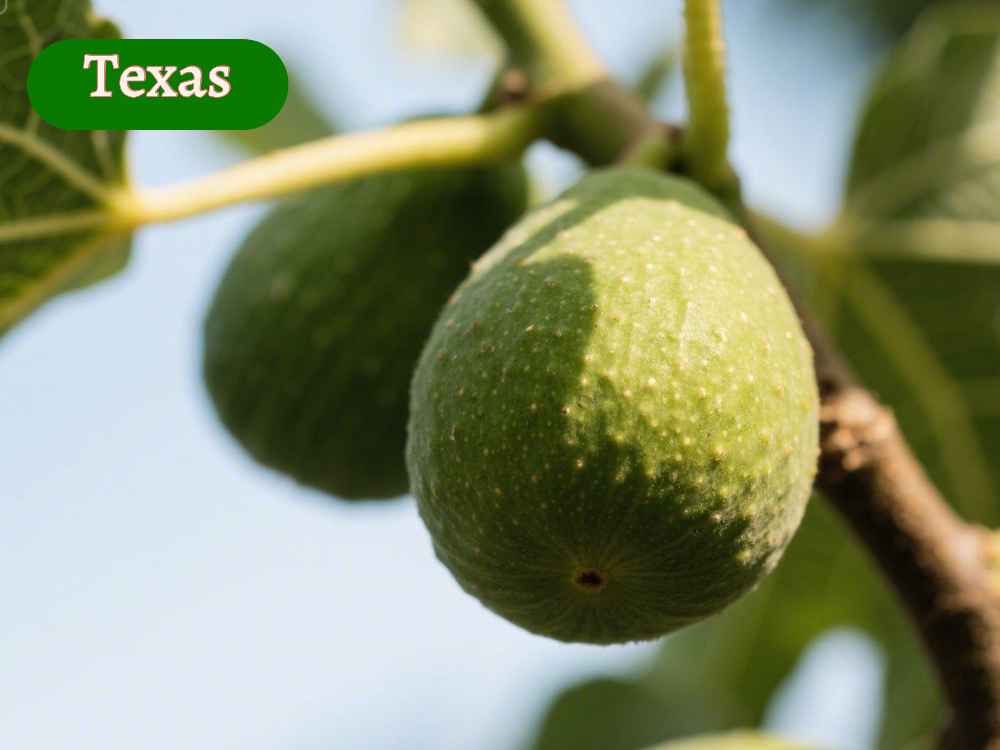Planting time for fig trees in Texas isn’t the same everywhere. In warmer parts like South or East Texas, figs thrive almost effortlessly.
However, if you’re in Central, West, or North Texas, the story is different. There, your fig tree might need a bit of protection. That makes it crucial to understand when to plant fig tree cuttings in Texas.
Fig cuttings root best when the tree is fully asleep (during dormancy), and that sleepy season doesn’t begin at the same time in every part of Texas.
Making gardening plans in Texas, if you are familiar with your Texas Growing Season, things get a lot easier.
Best Recomanded Fig Varieties for Texas
Choosing the right fig variety is very important, especially when you’re planning to grow it through cuttings or grafting.
Based on recommendations shared by experienced growers on the OurFigs.com forum, some of the best fig varieties for Texas (especially Zone 9a areas like Richmond and Houston) include LSU Tiger, Improved Celeste, Smith, Celeste, I-258, and Ronde de Bordeaux.
These fig varieties are favored not just for their rich flavor but also for their ability to handle Texas heat and occasional rain, especially those with a closed-eye trait that helps prevent fruit splitting and rot.
Living in north Texas, you must choose hardy varieties like Celeste, because one gardener in Carrollton got 150 pounds of figs from his 25-year-old tree, and even after a hard freeze in 2021, the tree grew back from the roots.
When to Plant Fig Tree Cuttings In Texas?
Hardwood cutting is the most reliable method to grow fig trees. Its roots grow better and stronger compared to softwood cuttings or seeds, which often fail or stay weak.
For best results, the plant you are taking the cutting from should be mature, at least 2 to 3 years old in the case of figs.
And the cutting itself should be taken during winter, when the fig tree is fully dormant, no leaves, no new growth, just bare branches.
This timing for fig tree cuttings is easy to notice, but it still varies by location within Texas.
So, What Exactly is the timing for planting a Fig Tree Cutting In Texas
| Region | Ideal Cutting Time | Dormancy Type | Recommended Cutting Type |
|---|---|---|---|
| South Texas | Late January to Mid-February | Semi-dormant | Semi-hardwood or hardwood (use humidity support) |
| East Texas | Early January to Mid-February | Full dormancy | Hardwood cutting |
| Central Texas | Late January to Early February | Medium dormancy | Hardwood cutting |
| West Texas | February to Early March | Deep dormancy | Hardwood cutting |
| North Texas | Early to Late February | Long and deep dormancy | Hardwood cutting |
Fig tree cutting time in Texas changes from one region to another, mainly because of how cold each area gets and how long dormancy lasts.
In places like South Texas, fig trees barely rest, so cuttings need to be taken during the brief still period in late winter.
In colder zones like North or West Texas, dormancy is longer and deeper, making February the ideal time.
East and Central Texas fall in between, where fig trees rest just enough to make hardwood cuttings successful.
Wherever you live, the best time to cut is when your fig tree has no leaves, no new buds, and the weather is cool but not freezing.
How to Take a Fig Tree Cutting in Texas?
Taking fig tree cuttings isn’t hard, but in Texas, the weather makes a big difference in how well they root.
Whether you’re in South Texas with mild winters or in the colder North, the 5 steps to take for fig tree cutting remain the same.
- Planting fig tree cuttings in dry areas like Central or West Texas, use a clear humidity dome, even if you’re working with just one tray.
- In the southern parts of Texas, fig trees don’t always go into full dormancy, so it’s better to wait until the branches feel dry and you see no new buds.
- For northern and western regions, cold winds can be harsh, so keep your cuttings somewhere protected, like near a warm wall or covered porch.
The proper timing for planting fig tree cuttings matters too. In places like East and Central Texas, dormancy doesn’t last long, so don’t wait too late into February.






